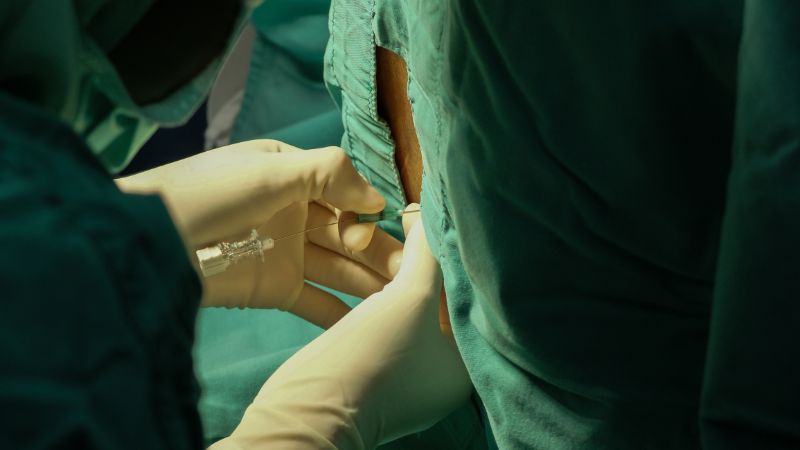Pulsed radiofrequency (PRF) is a pain management procedure aiming to alleviate chronic pain using electrical currents that modify nerve activity. It aims to disrupt the transmission of pain signals without causing significant tissue damage. By modulating nerve activity, PRF can relieve various types of chronic pain, including neuropathic pain, back pain, and joint pain.
Compared to other invasive treatments, pulsed radiofrequency offers long-term pain management solutions without the need for opioid-based anesthesia or long recovery periods.
Please contact us if you want more information about the pain management procedures we offer at Spinal Diagnostics. Our experienced team of professionals offers a comprehensive and multidisciplinary approach to multiple back and neck pain conditions.
Pulsed radiofrequency (PRF) uses electrical current to modulate nerve activity and alleviate chronic pain. Using digital imaging, a needle is guided and inserted near the targeted nerves.
Once correctly placed, intermittent pulses of electrical current are applied to the nerves, disrupting the transmission of pain signals.
Benefits offered by pulsed radiofrequency treatment include:
- Reduced risk of complications: PRF, compared to other radiofrequency procedures, does not use heat to disrupt the nerve signals. This reduces the risk of tissue damage and makes it a safer pain management alternative.
- Chronic pain symptom management: PRF can alleviate neuropathic pain, chronic back and joint pain, and conditions like arthritis.
- Intervention alternative: PRF can be ideal for those who are not ideal candidates or haven’t had optimal results from surgical procedures.
Before the Procedure
Before your pulsed radiofrequency procedure, you must provide your doctor with relevant information regarding your medical history, including any medications you may be taking, allergies, or medical conditions. This helps to ensure safety and optimal recovery during the treatment process.
During the Procedure
During your pulsed radiofrequency procedure, your doctor may perform the following steps:
- Anesthesia: Local anesthesia will be administered to numb the needle's insertion area.
- Needle placement: A small electrode needle will be carefully inserted through the skin and placed near the targeted nerves using digital imaging guidance.
- Sensory and motor stimulation test: Your doctor may perform a sensory and motor stimulation test to ensure correct needle placement. This is done by applying a low-level electrical current to the nerves that will cause a muscle twitch response.
- Pulsed radiofrequency application: The pulsed radiofrequency generator is connected to the needle after it has been safely placed. The device will start to deliver brief, intermittent pulses of electrical current to the targeted nerves.
- Injection site bandage: When the procedure has been completed, the needle will be removed, and a small bandage will be placed.
Procedure Recovery and Follow-Up
Your doctor will keep you under observation for a short period of time to ensure no immediate complications arise. Although you can go home the same day, it’s important to note that some temporary symptoms may appear after the treatment.
Your doctor will provide specific instructions regarding activity restrictions, pain management, and any follow-up appointments you may need. The final result of the procedure will start to manifest within a matter of days.
The side effects that may arise due to pulsed radiofrequency are usually temporary and do not need medical attention. These include:
- Mild soreness
- Bruising at the injection site
- Temporary increase in pain
Although rare, some potential risks and side effects associated with pulsed radiofrequency can include the following:
- Injection site infection: Some of the most common signs include redness, swelling, or constant drainage
- Nerve damage: Some symptoms of this complication include numbness, tingling, and weakness in the legs or spine
- Allergic reactions: Difficulty breathing and swelling may indicate an allergic reaction





